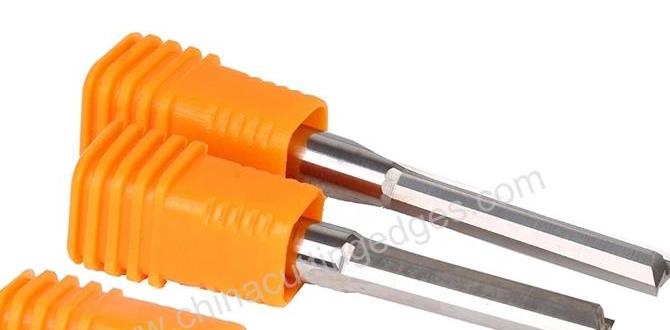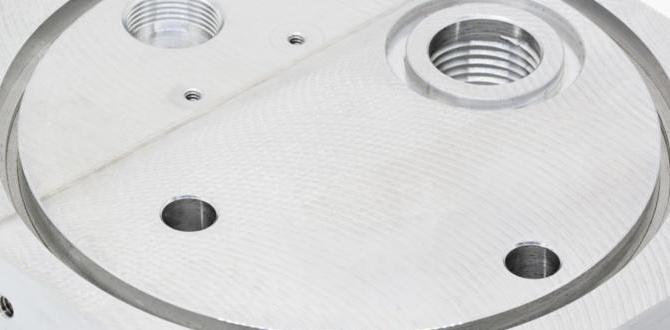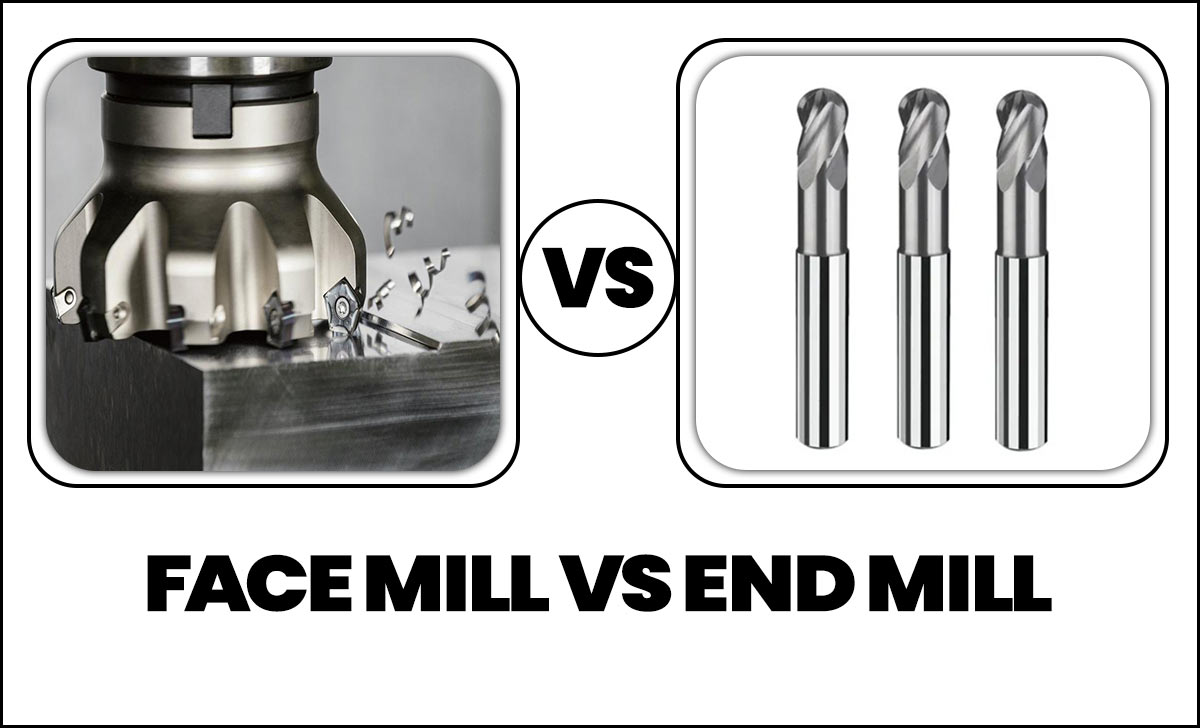An end mill is a commonly used tool in machining and manufacturing processes. It is a cutting tool designed with multiple flutes or teeth at the end, which facilitates the removal of material from a workpiece.
End mills come in various 3D shapes and sizes and are made from different materials to suit the specific needs of a particular application. This versatile tool has become an essential component in modern manufacturing, allowing for precise and efficient cutting operations in a wide range of composite materials, from metals to plastics.
Here, we will delve deeper into the world of end mills, exploring their various types, functions, and applications. Whether you are an experienced machinist or a newcomer to the world of machining, understanding the basics of an end mill is crucial to achieving optimal results in your manufacturing processes.

What Is An End Mill? – Explain In Detail

An end mill is a type of milling cutter diameter that is used in industrial milling applications. It is a rotary cutting tool with multiple flutes for cutting and shaping various materials. End mills are typically made of high-speed steel or carbide and are used to create precise, complex shapes and profiles on workpieces.
They are commonly used in milling machines and CNC machining centres to remove material from a workpiece and achieve the desired shape or finish. End mills are available in a variety of shapes, sizes, styles, and configurations to suit different machining needs.
Types Of End Mills
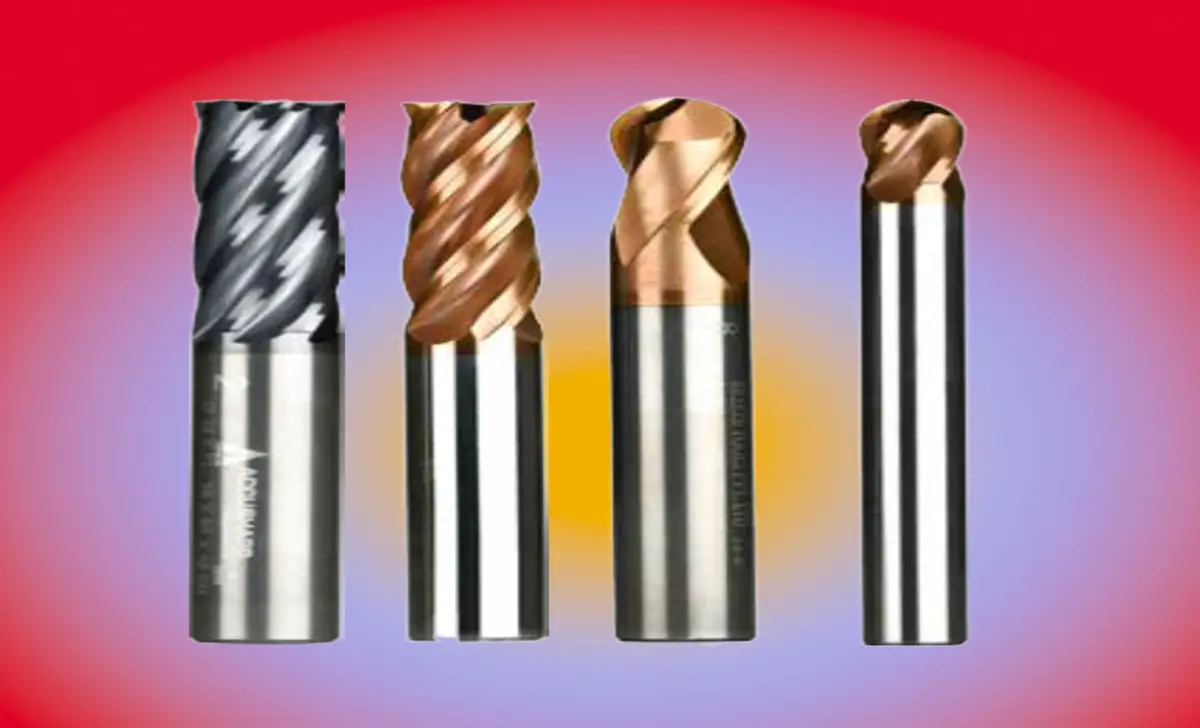
There are several types of end mills used in machining processes. These have a flat bottom and sharp corners, making them suitable for general milling applications. These have a rounded edge end, which allows for contouring and 3D machining. They are often used for creating smooth and curved surfaces.
These have a rounded corner, providing increased strength and reducing the likelihood of chipping. They are commonly used for milling difficult-to-machine materials. These are designed for removing large amounts of material quickly. They have deep, coarse teeth that facilitate aggressive cutting. Some common types include:
- Square End Mills
- Ball End Mills
- Corner Radius End Mills
- Roughing End Mills
- Tapered End Mills
- Drill Mills
- Single Flute End Mills
- Double Flute End Mills
5 Steps On Varieties Of End Mills

Regarding end mills, there are several factors to consider, including the different types of end mills available, flute configurations, material type, and the specific cutting tool requirements for your project. By following these five steps, you can gain a better understanding of end mills and make informed decisions when selecting the right tool for your milling applications. Let’s dive into each step in detail to explore the world of end mills.
Step 1: Understanding The Basic Function Of End Mills
To understand the basic function of end mills, it’s important to grasp the concept of cutting edge. The cutting edge of an end mill is the sharp, hardened surface that makes contact with the workpiece during milling operations. With its ability to cut on the periphery and the end face, an end mill enables versatile machining operations, including face milling and profile milling.
End mills are essential tools in milling applications, whether you’re shaping metal, wood, or other materials. They play a crucial role in material removal, creating precision cuts, and achieving the desired shape or finish. By understanding the function of end mills, you can harness their capabilities for optimal machining performance.
Step 2: Identifying Different Shapes Of End Mills

End mills come in various shapes, each designed for specific machining requirements. By identifying different end mill shapes, you can choose the right tool that caters to your project’s needs. These end mills have a square-shaped cutting edge, making them ideal for creating flat bottoms, square slots, and general milling applications.
These end mills have rounded corners, allowing for the efficient machining of complex contours, fillets, and chamfers. Featuring a rounded end, ball nose end mills are suitable for contouring, 3D machining, and creating smooth, rounded finishes. Let’s explore some commonly used end mill shapes:
- Square end mills
- Ball nose end mills
- Corner radius end mills
- Flat end mills
Step 3: Exploring End Mills With Different Number Of Flutes
The number of flutes on an end mill plays a significant role in chip space, cutting forces, and material removal rates. End mills with fewer flutes are suitable for machining operations that require higher feed rates and larger amounts of material removal. They allow for efficient chip evacuation and reduced cutting forces, leading to high material removal rates.
End mills with a higher number of flutes excel in applications that require high precision and surface finishes. The increased number of flutes end mills provides more cutting edges, resulting in smoother finishes and improved chip evacuation. Here’s what you need to know about end mills with different numbers of flutes:
- Fewer flutes
- More flutes
Step 4: Considering The Material Of End Mills
The material of an end mill greatly influences its wear resistance, cutting performance, and tool life. These end mills are made from a solid piece of carbide, offering excellent wear resistance and durability. They are suitable for machining harder materials, such as stainless steel, Titanium Nitride, and high-speed steel alloys.
Made from high-speed tool steel, these end mills are cost-effective and versatile. They work well in a wide range of applications, including milling softer materials like aluminium alloys and plastics. Combining the hardness of tungsten carbide and the toughness of cobalt, these end mills provide high performance, wear resistance, and enhanced tool life. Here are some common materials handy in end mills:
- Solid carbide end mills
- High-speed steel end mills
- Tungsten carbide end mills
- Cobalt steel alloy end mills
Step 5: Choosing The Right End Mill For Your Project
Choosing the right end mill for your project involves considering various factors, including the material type, cutting tool requirements, and the specific milling operations you’ll be performing.
Consider the material you’ll be machining, as different materials require different cutting tool materials and designs. If your project involves creating complex contours or profiles, choose an end mill that specifically has specific designs
for profile milling. Here are some key points to keep in mind:
- Material type
- Profile milling
- Tracer milling
Distinguishing Features Of End Mills
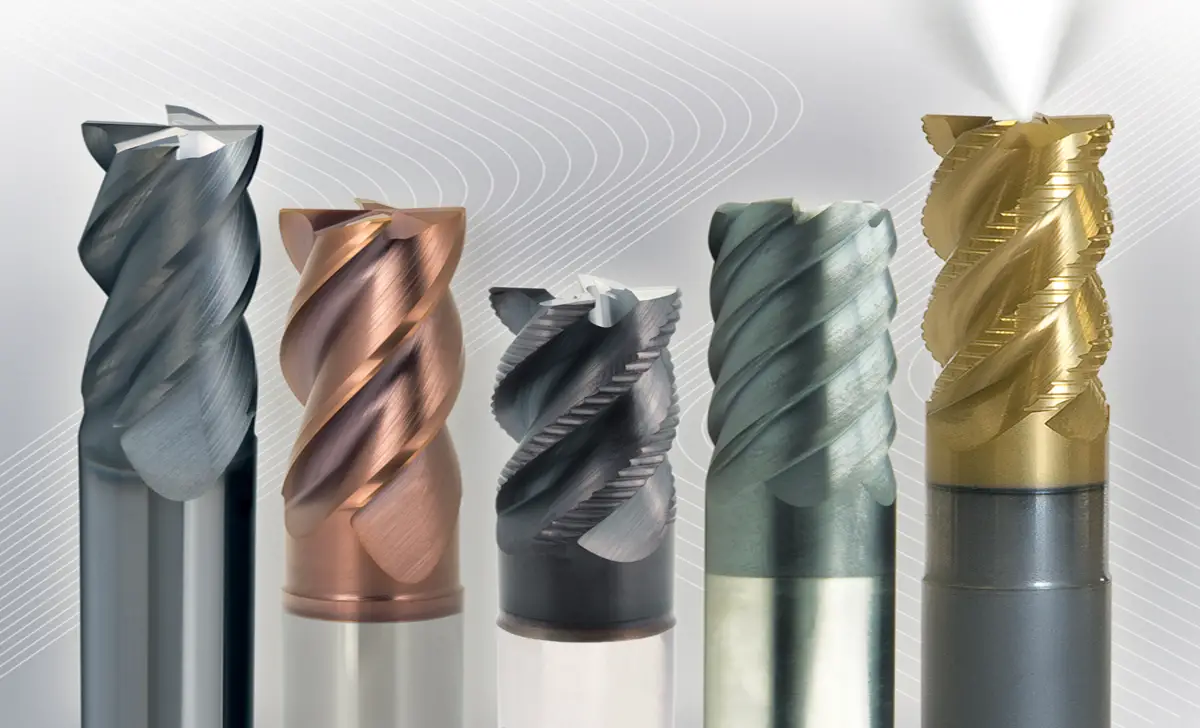
End mills offer distinguishing features that set them apart from other milling tools. End mills made from materials such as solid carbide, tungsten carbide, and cobalt steel alloys offer excellent wear resistance, allowing for longer tool life and reduced tooling costs.
Also, end mills with high durability and wear resistance can withstand the cutting forces encountered during milling operations, leading to extended tool life. End mills have specific designs to handle cutting forces, ensuring stable and efficient machining performance while minimizing the risk of tool breakage. These features include:
- Wear resistance
- Tool life
- Cutting forces
How Does An End Mill Function?
An end mill is a cutting tool used in milling operations to remove material from a workpiece. It typically comes with a hard material, such as high-speed steel or carbide, and features a cylindrical shape with cutting edges on both the bottom and the sides.
The primary function of an end mill is to create various shapes, contours, and holes in a workpiece by removing material through rotational cutting. As the end mill rotates, the cutting edges engage with the workpiece, generating chips and creating the desired shape.
The design and geometry of the end mill, including the number and shape of the cutting edges, play a crucial role in determining the efficiency and accuracy of the milling operation. With their versatility and precision, end mills are widely handy in machining processes across various industries.
End Mill Maintenance And Care
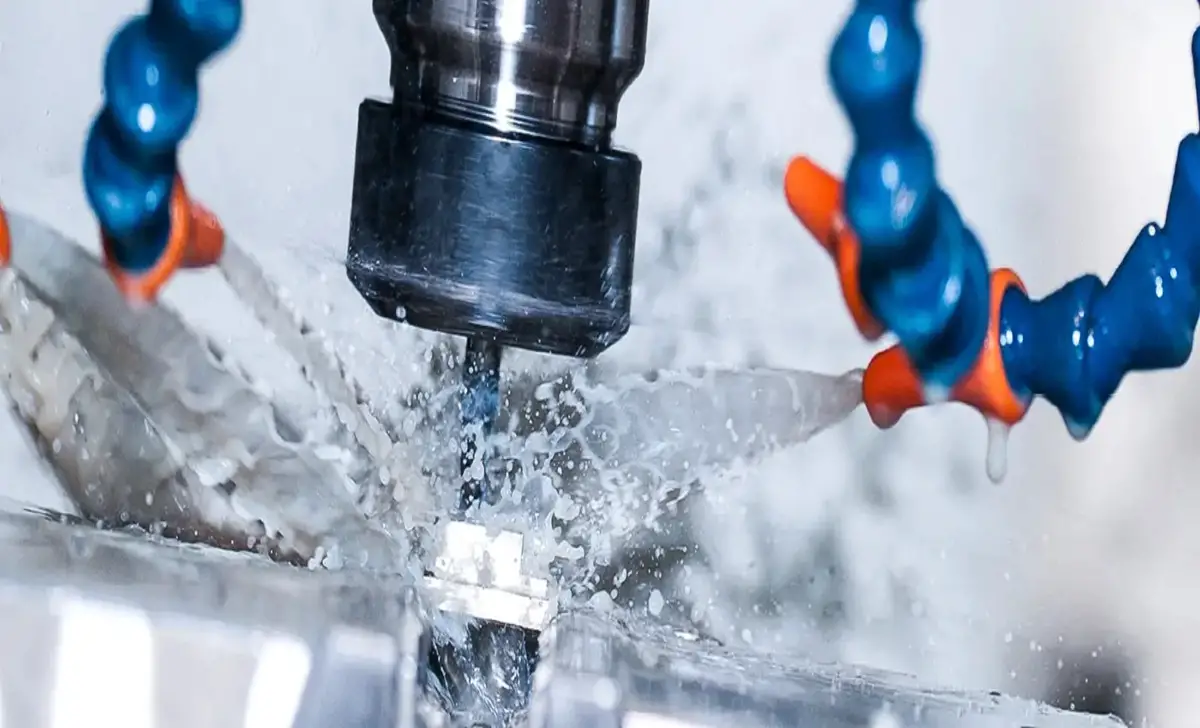
An end mill is a cutting tool used in machining operations to remove material from a workpiece. It is designed with a cylindrical shape and multiple cutting edges, allowing it to perform a variety of tasks with high precision and efficiency. End mills are commonly used in milling machines, CNC machines, and other automated manufacturing systems. Here are End Mill Maintenance and Care:
- Regularly clean the end mill to remove any dirt or debris
- Inspect the end mill for any signs of wear or damage
- Sharpen or replace the end mill as needed to maintain its cutting performance
- Properly store the end mill in a clean and dry place to prevent rust
- Use cutting fluid or lubricant while operating the end mill to prolong its lifespan
- Follow the manufacturer’s guidelines for speed and feed rates to prevent excessive wear
- Check for proper alignment and runout to ensure accurate and efficient milling operations
Practical Tips For Working With End Mills
Working with end mills requires consideration of various factors, such as machine type, cutting parameters, and tool maintenance. One of the key benefits of using an end mill is its versatility. It can be handy on a wide range of materials, including metals, plastics, and composites. This makes it a valuable tool for a variety of applications, from aerospace and automotive industries to general machining operations. Here are some practical tips for working with end mills:
- Choose the appropriate end mill for the material and application
- Ensure the end mill is properly secured in the collet or chuck
- Set the appropriate speed and feed rate for the material being machined
- Use coolant or lubricant to prevent overheating and prolong tool life
- Take light cuts to avoid excessive tool wear and prevent workpiece damage
- Monitor for signs of tool wear or damage and replace as needed
- Regularly clean and inspect the end mill for chips or debris that may affect performance
- Store end mills properly to prevent damage or dulling of cutting edges
Conclusion
Understanding the basics of end mills is crucial for any machining project. By following the steps on what an end mill is, you can identify the different varieties of end mills and choose the right one for your specific needs. End mills offer a range of advantages, such as versatility, precision, and efficiency in the milling process.
However, it is important to consider the limitations and select the appropriate materials for optimal results. When compared to other milling tool geometry, end mills show distinct differences in functionality and purpose. Remember to follow practical tips for working with end mills to ensure safety and effectiveness. With this knowledge, you can confidently embark on your machining projects and achieve the desired outcomes.
Frequently Asked Questions
1.When Choose Use An End Mill?
End mills are versatile tool holders handy for cutting and shaping materials in manufacturing settings. They are perfect for creating complex shapes and removing large amounts of material quickly.
2.What Is The Purpose Of End Milling?
The purpose of end milling is to remove material from the workpiece using the cutting edges at the bottom of the end mill. End mills enable various milling operations such as profile milling, rough finish, and finishing cuts.
3.What Is The Difference Between A Slot Mill And An End Mill?
A slot mill is a type of milling cutter specifically designed for creating slots or grooves in a workpiece, while an end mill is a type of milling cutter used for cutting or shaping the edges of a workpiece.
4.What Is The Difference Between A Drill Bit And An End Mill?
A drill bit is a cutting tool holder used to create holes, typically in materials such as metal or wood. It has a pointed tip and is specifically designed to cut in an axial direction, primarily creating cylindrical holes.
5.What Is The Difference Between An End Mill And A Mill?
An end mill is a type of milling cutter that has cutting teeth on the end and sides of its cylindrical shape. It is handy for various milling operations to make slots, pockets, and other complex shapes in workpieces.


